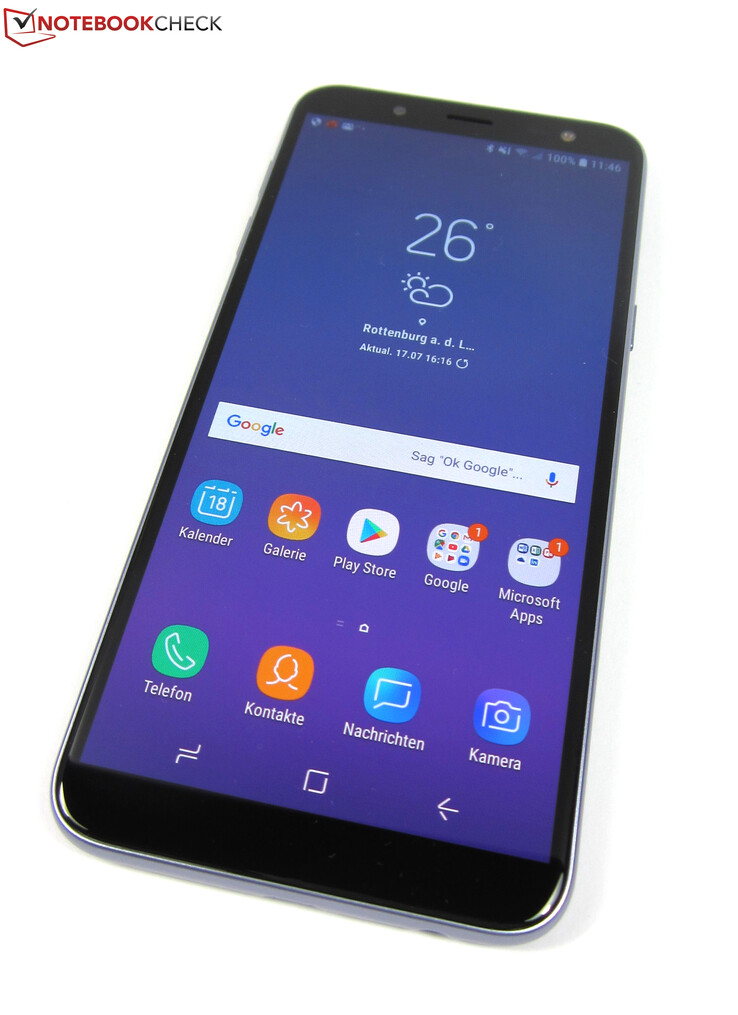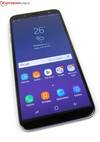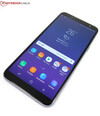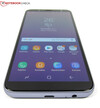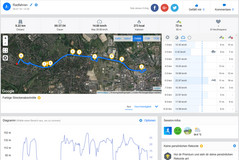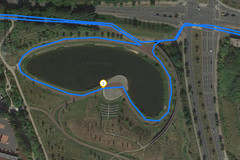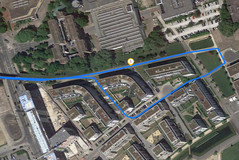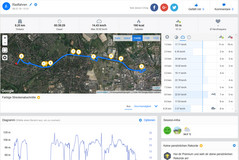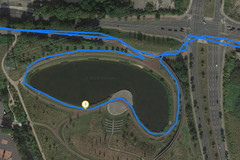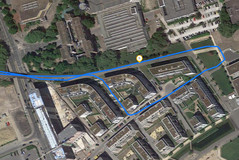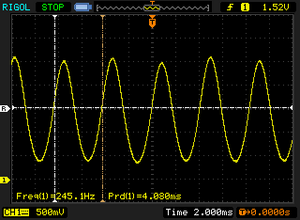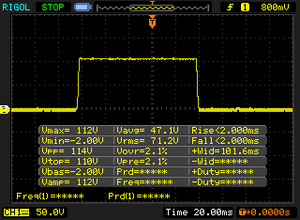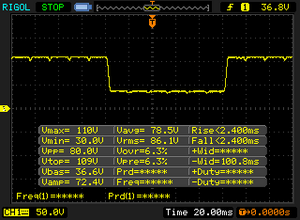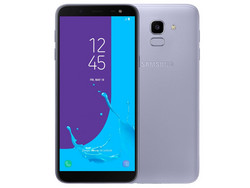Breve Análise do Smartphone Samsung Galaxy J6 (2018)
Os Top 10
» Os Top 10 Portáteis Multimídia
» Os Top 10 Portáteis de Jogos
» Os Top 10 Portáteis Leves para Jogos
» Os Top 10 Portáteis Acessíveis de Escritório/Empresariais
» Os Top 10 Portáteis Premium de Escritório/Empresariais
» Os Top 10 dos Portáteis Workstation
» Os Top 10 Subportáteis
» Os Top 10 Ultrabooks
» Os Top 10 Conversíveis
» Os Top 10 Tablets
» Os Top 10 Smartphones
» A melhores Telas de Portáteis Analisadas Pela Notebookcheck
» Top 10 dos portáteis abaixo dos 500 Euros da Notebookcheck
» Top 10 dos Portáteis abaixo dos 300 Euros
Size Comparison
| |||||||||||||||||||||||||
iluminação: 93 %
iluminação com acumulador: 296 cd/m²
Contraste: ∞:1 (Preto: 0 cd/m²)
ΔE ColorChecker Calman: 2.8 | ∀{0.5-29.43 Ø4.77}
ΔE Greyscale Calman: 1.9 | ∀{0.09-98 Ø5}
96.3% sRGB (Calman 2D)
Gamma: 2.09
CCT: 6398 K
| Samsung Galaxy J6 2018 Super AMOLED, 1480x720, 5.6" | Asus ZenFone 4 Selfie Pro ZD552KL AMOLED, 1920x1080, 5.5" | Motorola Moto G6 Plus IPS, 2160x1080, 5.9" | Samsung Galaxy J5 (2017) Duos Super AMOLED, 1280x720, 5.2" | Sony Xperia XA2 IPS, 1920x1080, 5.2" | Huawei Honor 7X IPS, 2160x1080, 5.9" | Nokia 6 2018 IPS, 1920x1080, 5.5" | |
|---|---|---|---|---|---|---|---|
| Screen | -46% | 61% | 20% | -44% | 14% | -55% | |
| Brightness middle (cd/m²) | 296 | 456 54% | 761 157% | 448 51% | 513 73% | 533.2 80% | 417 41% |
| Brightness (cd/m²) | 294 | 455 55% | 723 146% | 451 53% | 506 72% | 511 74% | 421 43% |
| Brightness Distribution (%) | 93 | 85 -9% | 90 -3% | 91 -2% | 93 0% | 88 -5% | 88 -5% |
| Black Level * (cd/m²) | 0.69 | 0.42 | 0.35 | 0.61 | |||
| Colorchecker dE 2000 * | 2.8 | 5.6 -100% | 2.4 14% | 2.7 4% | 5 -79% | 2.83 -1% | 6.1 -118% |
| Colorchecker dE 2000 max. * | 9.8 | 11.1 -13% | 5.2 47% | 9.8 -0% | 11.4 -16% | 6.72 31% | 11.2 -14% |
| Greyscale dE 2000 * | 1.9 | 6.9 -263% | 1.8 5% | 1.6 16% | 7.8 -311% | 3.7 -95% | 7.1 -274% |
| Gamma | 2.09 105% | 2.3 96% | 2.21 100% | 2.06 107% | 2.2 100% | 1.9 116% | 2.16 102% |
| CCT | 6398 102% | 7883 82% | 6312 103% | 6557 99% | 7964 82% | 6918 94% | 8362 78% |
| Contrast (:1) | 1103 | 1221 | 1523 | 684 |
* ... menor é melhor
Cintilação da tela / PWM (modulação por largura de pulso)
| Tela tremeluzindo/PWM detectado | 245.1 Hz | ||
A luz de fundo da tela pisca em 245.1 Hz (pior caso, por exemplo, utilizando PWM) . A frequência de 245.1 Hz é relativamente baixa, portanto, usuários sensíveis provavelmente notarão cintilação e sentirão fadiga ocular na configuração de brilho indicada e abaixo. [pwm_comparison] Em comparação: 53 % de todos os dispositivos testados não usam PWM para escurecer a tela. Se PWM foi detectado, uma média de 8081 (mínimo: 5 - máximo: 343500) Hz foi medida. | |||
Exibir tempos de resposta
| ↔ Tempo de resposta preto para branco | ||
|---|---|---|
| 4 ms ... ascensão ↗ e queda ↘ combinadas | ↗ 2 ms ascensão | |
| ↘ 2 ms queda | ||
| A tela mostra taxas de resposta muito rápidas em nossos testes e deve ser muito adequada para jogos em ritmo acelerado. Em comparação, todos os dispositivos testados variam de 0.1 (mínimo) a 240 (máximo) ms. » 15 % de todos os dispositivos são melhores. Isso significa que o tempo de resposta medido é melhor que a média de todos os dispositivos testados (20.2 ms). | ||
| ↔ Tempo de resposta 50% cinza a 80% cinza | ||
| 4.8 ms ... ascensão ↗ e queda ↘ combinadas | ↗ 2.4 ms ascensão | |
| ↘ 2.4 ms queda | ||
| A tela mostra taxas de resposta muito rápidas em nossos testes e deve ser muito adequada para jogos em ritmo acelerado. Em comparação, todos os dispositivos testados variam de 0.165 (mínimo) a 636 (máximo) ms. » 15 % de todos os dispositivos são melhores. Isso significa que o tempo de resposta medido é melhor que a média de todos os dispositivos testados (31.6 ms). | ||
| JetStream 1.1 - Total Score | |
| Huawei Honor 7X (Chrome 63.0.3239.111) | |
| Nokia 6 2018 (Browser: Chrome 65) | |
| Motorola Moto G6 Plus (Chrome 66) | |
| Asus ZenFone 4 Selfie Pro ZD552KL (Chrome 64) | |
| Sony Xperia XA2 (Chrome 65.0.3325.109) | |
| Samsung Galaxy J5 (2017) Duos (Samsung Browser 5.4) | |
| Média Samsung Exynos 7870 Octa (20.8 - 26.4, n=8) | |
| Samsung Galaxy J6 2018 (Chrome 67.0.3396.87) | |
| Octane V2 - Total Score | |
| Média da turma Smartphone (2228 - 126661, n=194, últimos 2 anos) | |
| Huawei Honor 7X (Chrome 63.0.3239.111) | |
| Motorola Moto G6 Plus (Chrome 66) | |
| Nokia 6 2018 (Browser: Chrome 65) | |
| Samsung Galaxy J5 (2017) Duos (Samsung Browser 5.4) | |
| Asus ZenFone 4 Selfie Pro ZD552KL (Chrome 64) | |
| Sony Xperia XA2 (Chrome 65.0.3325.109) | |
| Média Samsung Exynos 7870 Octa (3721 - 4968, n=8) | |
| Samsung Galaxy J6 2018 (Chrome 67.0.3396.87) | |
| Mozilla Kraken 1.1 - Total | |
| Samsung Galaxy J6 2018 (Chrome 67.0.3396.87) | |
| Sony Xperia XA2 (Chrome 65.0.3325.109) | |
| Nokia 6 2018 (Browser: Chrome 65) | |
| Motorola Moto G6 Plus (Chrome 66) | |
| Asus ZenFone 4 Selfie Pro ZD552KL (Chrome 64) | |
| Média Samsung Exynos 7870 Octa (6784 - 11916, n=8) | |
| Huawei Honor 7X (Chrome 63.0.3239.111) | |
| Samsung Galaxy J5 (2017) Duos (Samsung Browser 5.4) | |
| Média da turma Smartphone (257 - 28190, n=154, últimos 2 anos) | |
| WebXPRT 2015 - Overall | |
| Nokia 6 2018 | |
| Huawei Honor 7X (Chrome 63.0.3239.111) | |
| Motorola Moto G6 Plus (Chrome 66) | |
| Sony Xperia XA2 (Chrome 65.0.3325.109) | |
| Samsung Galaxy J6 2018 (Chrome 67.0.3396.87) | |
| Samsung Galaxy J5 (2017) Duos (Samsung Browser 5.4) | |
| Média Samsung Exynos 7870 Octa (64 - 91, n=8) | |
* ... menor é melhor
| Samsung Galaxy J6 2018 | Asus ZenFone 4 Selfie Pro ZD552KL | Motorola Moto G6 Plus | Samsung Galaxy J5 (2017) Duos | Sony Xperia XA2 | Huawei Honor 7X | Nokia 6 2018 | Média 32 GB eMMC Flash | Média da turma Smartphone | |
|---|---|---|---|---|---|---|---|---|---|
| AndroBench 3-5 | 19% | 112% | -21% | 22% | 38% | 19% | 21% | 1615% | |
| Sequential Read 256KB (MB/s) | 206.5 | 269.3 30% | 286.6 39% | 204.4 -1% | 271.5 31% | 265.3 28% | 272.6 32% | 242 ? 17% | 2246 ? 988% |
| Sequential Write 256KB (MB/s) | 100.5 | 139.5 39% | 216.1 115% | 52 -48% | 127.4 27% | 127.9 27% | 118.3 18% | 100.5 ? 0% | 1882 ? 1773% |
| Random Read 4KB (MB/s) | 27.05 | 36.8 36% | 58.4 116% | 24.07 -11% | 43.07 59% | 81.4 201% | 38.78 43% | 43.1 ? 59% | 298 ? 1002% |
| Random Write 4KB (MB/s) | 12.37 | 12 -3% | 62.8 408% | 9.9 -20% | 13.82 12% | 20.24 64% | 15.3 24% | 22.3 ? 80% | 346 ? 2697% |
| Sequential Read 256KB SDCard (MB/s) | 81.8 ? | 83.9 ? 3% | 83.7 ? 2% | 72.2 ? -12% | 86 ? 5% | 52.7 -36% | 83.4 ? 2% | 71.8 ? -12% | |
| Sequential Write 256KB SDCard (MB/s) | 65.8 ? | 72.1 ? 10% | 62.1 ? -6% | 44.21 ? -33% | 64.8 ? -2% | 30.55 -54% | 61.3 ? -7% | 52.9 ? -20% |
| PUBG Mobile | |||
| Configurações | Valor | ||
| Balanced | 10 fps | ||
| Dead Trigger 2 | |||
| Configurações | Valor | ||
| high | 60 fps | ||
(+) A temperatura máxima no lado superior é 32.9 °C / 91 F, em comparação com a média de 35.2 °C / 95 F , variando de 21.9 a 247 °C para a classe Smartphone.
(+) A parte inferior aquece até um máximo de 34.8 °C / 95 F, em comparação com a média de 34 °C / 93 F
(+) Em uso inativo, a temperatura média para o lado superior é 25.9 °C / 79 F, em comparação com a média do dispositivo de 32.9 °C / ### class_avg_f### F.
Samsung Galaxy J6 2018 análise de áudio
(+) | os alto-falantes podem tocar relativamente alto (###valor### dB)
Graves 100 - 315Hz
(-) | quase nenhum baixo - em média 24.6% menor que a mediana
(±) | a linearidade dos graves é média (10% delta para a frequência anterior)
Médios 400 - 2.000 Hz
(+) | médios equilibrados - apenas 4.1% longe da mediana
(+) | médios são lineares (6.6% delta para frequência anterior)
Altos 2 - 16 kHz
(±) | máximos mais altos - em média 5.6% maior que a mediana
(±) | a linearidade dos máximos é média (7.2% delta para frequência anterior)
Geral 100 - 16.000 Hz
(±) | a linearidade do som geral é média (21.2% diferença em relação à mediana)
Comparado com a mesma classe
» 40% de todos os dispositivos testados nesta classe foram melhores, 8% semelhantes, 52% piores
» O melhor teve um delta de 11%, a média foi 35%, o pior foi 134%
Comparado com todos os dispositivos testados
» 58% de todos os dispositivos testados foram melhores, 7% semelhantes, 35% piores
» O melhor teve um delta de 4%, a média foi 24%, o pior foi 134%
Samsung Galaxy J5 (2017) Duos análise de áudio
(+) | os alto-falantes podem tocar relativamente alto (###valor### dB)
Graves 100 - 315Hz
(-) | quase nenhum baixo - em média 24.1% menor que a mediana
(±) | a linearidade dos graves é média (10.1% delta para a frequência anterior)
Médios 400 - 2.000 Hz
(+) | médios equilibrados - apenas 2.4% longe da mediana
(+) | médios são lineares (4.6% delta para frequência anterior)
Altos 2 - 16 kHz
(±) | máximos mais altos - em média 6.2% maior que a mediana
(+) | os máximos são lineares (4.7% delta da frequência anterior)
Geral 100 - 16.000 Hz
(±) | a linearidade do som geral é média (18.8% diferença em relação à mediana)
Comparado com a mesma classe
» 22% de todos os dispositivos testados nesta classe foram melhores, 10% semelhantes, 68% piores
» O melhor teve um delta de 11%, a média foi 35%, o pior foi 134%
Comparado com todos os dispositivos testados
» 43% de todos os dispositivos testados foram melhores, 8% semelhantes, 50% piores
» O melhor teve um delta de 4%, a média foi 24%, o pior foi 134%
Motorola Moto G6 Plus análise de áudio
(+) | os alto-falantes podem tocar relativamente alto (###valor### dB)
Graves 100 - 315Hz
(-) | quase nenhum baixo - em média 26.3% menor que a mediana
(±) | a linearidade dos graves é média (7.9% delta para a frequência anterior)
Médios 400 - 2.000 Hz
(+) | médios equilibrados - apenas 3.9% longe da mediana
(+) | médios são lineares (5.4% delta para frequência anterior)
Altos 2 - 16 kHz
(+) | agudos equilibrados - apenas 4.6% longe da mediana
(+) | os máximos são lineares (5.1% delta da frequência anterior)
Geral 100 - 16.000 Hz
(±) | a linearidade do som geral é média (18.7% diferença em relação à mediana)
Comparado com a mesma classe
» 21% de todos os dispositivos testados nesta classe foram melhores, 9% semelhantes, 69% piores
» O melhor teve um delta de 11%, a média foi 35%, o pior foi 134%
Comparado com todos os dispositivos testados
» 42% de todos os dispositivos testados foram melhores, 8% semelhantes, 50% piores
» O melhor teve um delta de 4%, a média foi 24%, o pior foi 134%
| desligado | |
| Ocioso | |
| Carga |
|
Key:
min: | |
| Samsung Galaxy J6 2018 3000 mAh | Asus ZenFone 4 Selfie Pro ZD552KL 3000 mAh | Motorola Moto G6 Plus 3200 mAh | Samsung Galaxy J5 (2017) Duos 3000 mAh | Sony Xperia XA2 3300 mAh | Huawei Honor 7X 3340 mAh | Nokia 6 2018 3000 mAh | Média Samsung Exynos 7870 Octa | Média da turma Smartphone | |
|---|---|---|---|---|---|---|---|---|---|
| Power Consumption | 30% | 9% | 39% | 17% | -28% | 9% | 3% | -31% | |
| Idle Minimum * (Watt) | 0.85 | 0.58 32% | 0.5 41% | 0.52 39% | 0.39 54% | 1.02 -20% | 0.67 21% | 0.71 ? 16% | 0.847 ? -0% |
| Idle Average * (Watt) | 1.51 | 1.31 13% | 1.78 -18% | 1.17 23% | 1.61 -7% | 2.46 -63% | 1.76 -17% | 1.909 ? -26% | 1.446 ? 4% |
| Idle Maximum * (Watt) | 1.57 | 1.33 15% | 1.81 -15% | 1.24 21% | 1.62 -3% | 2.51 -60% | 1.78 -13% | 1.995 ? -27% | 1.63 ? -4% |
| Load Average * (Watt) | 4.21 | 1.88 55% | 3.3 22% | 1.66 61% | 3.12 26% | 4.16 1% | 2.82 33% | 3.02 ? 28% | 6.95 ? -65% |
| Load Maximum * (Watt) | 5.88 | 3.8 35% | 5.14 13% | 2.94 50% | 4.92 16% | 5.87 -0% | 4.56 22% | 4.42 ? 25% | 11.3 ? -92% |
* ... menor é melhor
| Samsung Galaxy J6 2018 3000 mAh | Asus ZenFone 4 Selfie Pro ZD552KL 3000 mAh | Motorola Moto G6 Plus 3200 mAh | Samsung Galaxy J5 (2017) Duos 3000 mAh | Sony Xperia XA2 3300 mAh | Huawei Honor 7X 3340 mAh | Nokia 6 2018 3000 mAh | |
|---|---|---|---|---|---|---|---|
| Duração da bateria | -8% | 5% | 16% | 20% | -22% | 14% | |
| Reader / Idle (h) | 24.9 | 30.8 24% | 26.1 5% | 41.7 67% | 18.5 -26% | 30.6 23% | |
| H.264 (h) | 14.5 | 9 -38% | 15.3 6% | 12.8 -12% | 11.3 -22% | ||
| WiFi v1.3 (h) | 11.8 | 10.9 -8% | 11.7 -1% | 12.3 4% | 14.8 25% | 11.1 -6% | 15.7 33% |
| Load (h) | 5 | 6.7 34% | 7.5 50% | 5 0% | 3.3 -34% | 6 20% |
Pro
Contra
O Samsung Galaxy J6 (2018) é um bom smartphone de nível básico que tem deficiências em algumas áreas cruciais. A Samsung depende muito do peso de sua série Galaxy J, na medida em que recomendamos o Galaxy J5 (2017) do ano passado, sobre o J6 (2018).
O Samsung Galaxy J6 (2018) é um bom smartphone de nível básico, mas não se apresse em comprá-lo; o Galaxy J5 (2017) do ano passado oferece mais recursos pela metade do custo.
Existem muitas áreas nas quais o J6 (2018) é mais deficiente do que seu predecessor. Embora a carcaça seja bem trabalhada, é feita de plástico ao invés do alumínio que a Samsung usou no J5 (2017). Além disso, a Samsung removeu a conectividade Wi-Fi de 5 GHz entre gerações, descartou o brilho automático e usou sensores de câmera do J5 (2016). Todos esses erros dificultam o J6 (2018) no uso diário em comparação com seu antecessor.
Esses problemas tomam outras decisões, como a escolha do SoC, a falta de USB Type-C, a ausência do carregamento rápido e uma tela 720p, mais frustrante, ao considerar o que a concorrência oferece agora.
No entanto, o J6 (2018) faz algumas coisas bem. O dispositivo tem slots de cartão microSD e dual nano-SIM dedicados e ampla cobertura LTE; significativamente mais do que o J5 (2017). Da mesma forma, o J6 (2018) vem com o Android Oreo 8.0 e possui um módulo GPS preciso. Por fim, o dispositivo tem boa duração de bateria e sua tela Super AMOLED é brilhante e reproduz cores precisas.
Samsung Galaxy J6 2018
- 07/20/2018 v6 (old)
Manuel Masiero


